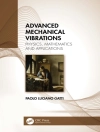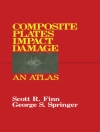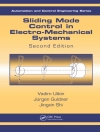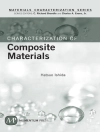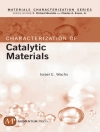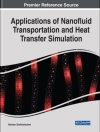This book covers nanostructure materials for application as supercapacitors. It highlights the properties that make them ideal for energy storage applications. It reports approaches on their electronic, electrical, thermal properties to increase their specific surfaces in order to improve their electrical storage capacities. This book consolidates information on synthesis, characterization and application for supercapacitors with detailed characterization, mechanistic approaches and theoretical consideration. The progress in experimental and theoretical studies on various properties of nanomaterials and its polymer and other composites are described in detail.
Inhoudsopgave
Nanostructured Materials for Supercapacitors.- Electrochemical Double Layer Capacitors.- Pseudo-capacitors: Introduction, Controlling Factors and Future.- Fundamentals, Mechanism, and Materials for Hybrid Supercapacitors.- Characterization methods for Supercapacitors.- Nanosupercapacitors.- Mesoporous Carbon for Supercapacitors.- Activated Carbon based supercapacitors.- Carbon Aerogels for supercapacitor applications.- Carbon Nanofibers for supercapacitors.- Graphene-based nanomaterial for Supercapacitor Application.- Nanocomposites of carbon nanotubes for electrochemical energy storage applications.- Transition Metal Oxides for Supercapacitors.- Novel 3D Hierarchical Porous Carbon/Metal Oxides or Carbide Composites.- Nanostructured 2D Transition Metal Dichalcogenides (TMDs) as Electrodes for Supercapacitor.- Recent development in chalcogenides for supercapacitor applications.- Chalcogenide based 2D Nanomaterials for Supercapacitors.- Chalcogenides based Nano Composites for Supercapacitors.- Chalcogenides and Phosphides for High-Performance Supercapacitors.- Nanostructured metal phosphides and chalcogenides for supercapacitor application.- Carbon Nanocomposite-based SCs as Wearable Energy Storage.- Conducting Polymers based Nanocomposites for Supercapacitors.- Redox active electrolytes in supercapacitors.- Supercapacitors: From Lab to Industry.- Recent Development in Flexible Supercapacitors.- Flexible Supercapacitors.- Supercapacitors: Future Direction and Challenges.
Over de auteur
Prof. Sabu Thomas is currently serving as Vice-Chancellor of Mahatma Gandhi University, Kerala, India. He is also a full professor of Polymer Science and Engineering at the School of Chemical Sciences, since 1998. He was previously Pro-Vice-Chancellor of Mahatma Gandhi University 2017-2018, Director of School of Chemical Science during 2010-2013, and Hon. Director of International and Inter-University Centre for Nanoscience and Nanotechnology 2009-2015 and 2016-17. In 2015, Prof. Thomas received his first Doctorate Honoris Causa from University of Southern Brittany in Lorient, France. In 2016, he received his second Doctorate Honoris Causa from University of Lorraine, France. He was awarded the Fellow of the Royal Society of Chemistry, London, FRSC in 2012. He received the Bronze Medal of the Chemical Research Society of India and the MRSI Medal of the Material Research Society of India in 2013. He was the recipient of Fulbright-Nehru International Education Administrators Award 2017. He also received TRi LA Academician of the year 2018 award.
Mr. Amadou Belal Gueye is a research scholar at Mahatma Gandhi University, India. He joined Mahatma Gandhi University as a Ph.D. scholar in 2019. He is working on “Design and Development of Advanced Cathode Materials for High Performance Lithium-Sulfur Batteries. He has done his Master in Physical Chemistry Applied to Energy and Analysis From Cheikh Anta Diop University, Dakar, Senegal. His current research interest is developing high-performance energy storage devices.
Dr. Ram K. Gupta is an associate professor at Pittsburg State University. Dr. Gupta’s research focuses on 2D materials, nanomagnetism, nanomaterials, green energy production and storage using conducting polymers and composites, electrocatalysts for fuel cells, optoelectronics and photovoltaics devices, organic-inorganic hetero-junctions for sensors, bio-based polymers, bio-compatible nanofibers for tissue regeneration, scaffold and antibacterial applications, bio-degradable metallic implants. He is serving as an associate editor, guest editor, and editorial board member for various journals.


